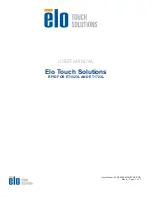
Command:
Byte
0
Checksum8
1
0xF8
2
4 + NumI2CWordsSend
3
0x3B
4
Checksum16 (LSB)
5
Checksum16 (MSB)
6
I2COptions
Bits 7-4: Reserved
Bit 3: Enable Clock Stretching
Bit 2: No Stop when restarting
Bit 1: ResetAtStart
Bit 0: Reserved
7
SpeedAdjust
8
SDAPinNum
9
SCLPinNum
10
AddressByte
11
Reserved
12
NumI2CBytesToSend
13
NumI2CBytesToReceive
14
I2CByte0
...
...
Response:
Byte
0
Checksum8
1
0xF8
2
3 +
NumI2CWordsReceive
3
0x3B
4
Checksum16 (LSB)
5
Checksum16 (MSB)
6
Errorcode
7
Reserved
8
AckArray0
9
AckArray1
10
AckArray2
11
AckArray3
12
I2CByte0
...
...
NumI2CWordsSend:
This is the number of I²C bytes to send divided by 2. If the number of bytes is odd, round up and add
an extra zero to the packet. This parameter is actually just to specify the size of this packet, as the NumI2CbytesToSend
parameter below actually specifies how many bytes will be sent.
I2COptions:
If ResetAtStart is true, an I²C bus reset will be done before communicating.
SpeedAdjust:
Allows the communication frequency to be reduced. 0 is the maximum speed of about 150 kHz. 20 is a
speed of about 70 kHz. 255 is the minimum speed of about 10 kHz.
SDAP/SCLP -PinNum:
Assigns which digital I/O line is used for each I²C line. Value passed is 0-19 corresponding to the
normal digital I/O numbers as specified in Section 2.8. Note that the screw terminals labeled “SDA” and “SCL” on hardware
revision 1.20 or 1.21 are not used for I²C. Note that the I²C bus generally requires pull-up resistors of perhaps 4.7 kΩ from
SDA to Vs and SCL to Vs.
AddressByte:
This is the first byte of data sent on the I²C bus. The upper 7 bits are the address of the slave chip and bit 0 is
the read/write bit. Note that the read/write bit is controlled automatically by the LabJack, and thus bit 0 is ignored.
NumI2CBytesToSend:
Specifies how many I²C bytes will be sent (0-50).
NumI2CBytesToReceive:
Specifies how many I²C bytes will be read (0-52).
I2Cbyte#
: In the command, these are the bytes to send. In the response, these are the bytes read.
NumI2CWordsReceive:
This is the number of I²C bytes to receive divided by 2. If the number of bytes is odd, the value is
rounded up and an extra zero is added to the packet. This parameter is actually just to specify the size of this packet, as the
NumI2CbytesToReceive parameter above actually specifies how many bytes to read.
AckArray#:
Represents a 32-bit value where bits are set if the corresponding I²C write byte was ack’ed. Useful for
debugging up to the first 32 write bytes of communication. Bit 0 corresponds to the last data byte, bit 1 corresponds to the
second to last data byte, and so on up to the address byte. So if n is the number of data bytes, the ACKs value should be
(2^(n+1))-1.
5.2.20 - SHT1X
Requires U3 hardware version 1.21. Reads temperature and humidity from a Sensirion SHT1X sensor (which is used by the EI-
1050). For more information, see the EI-1050 datasheet, and the SHT1X datasheet from sensirion.com.
Command:
Byte
0
Checksum8
1
0xF8
2
0x02
3
0x39
4
Checksum16 (LSB)
5
Checksum16 (MSB)
6
DataPinNum (0-19)
7
ClockPinNum (0-19)
8
Reserved
9
Reserved
Response:
Byte
0
Checksum8
1
0xF8
2
0x05
3
0x39
4
Checksum16 (LSB)
5
Checksum16 (MSB)
6
Errorcode
7
0x00
8
StatusReg
9
StatusRegCRC
10-11
Temperature
12
TemperatureCRC
13-14
Humidity
15
HumidityCRC
Data/Clock -PinNum
: Assigns which digital I/O line is used for each SPI line. Value passed is 0-7 corresponding to FIO0-
FIO7. State and direction are controlled automatically for the specified lines.
57








































